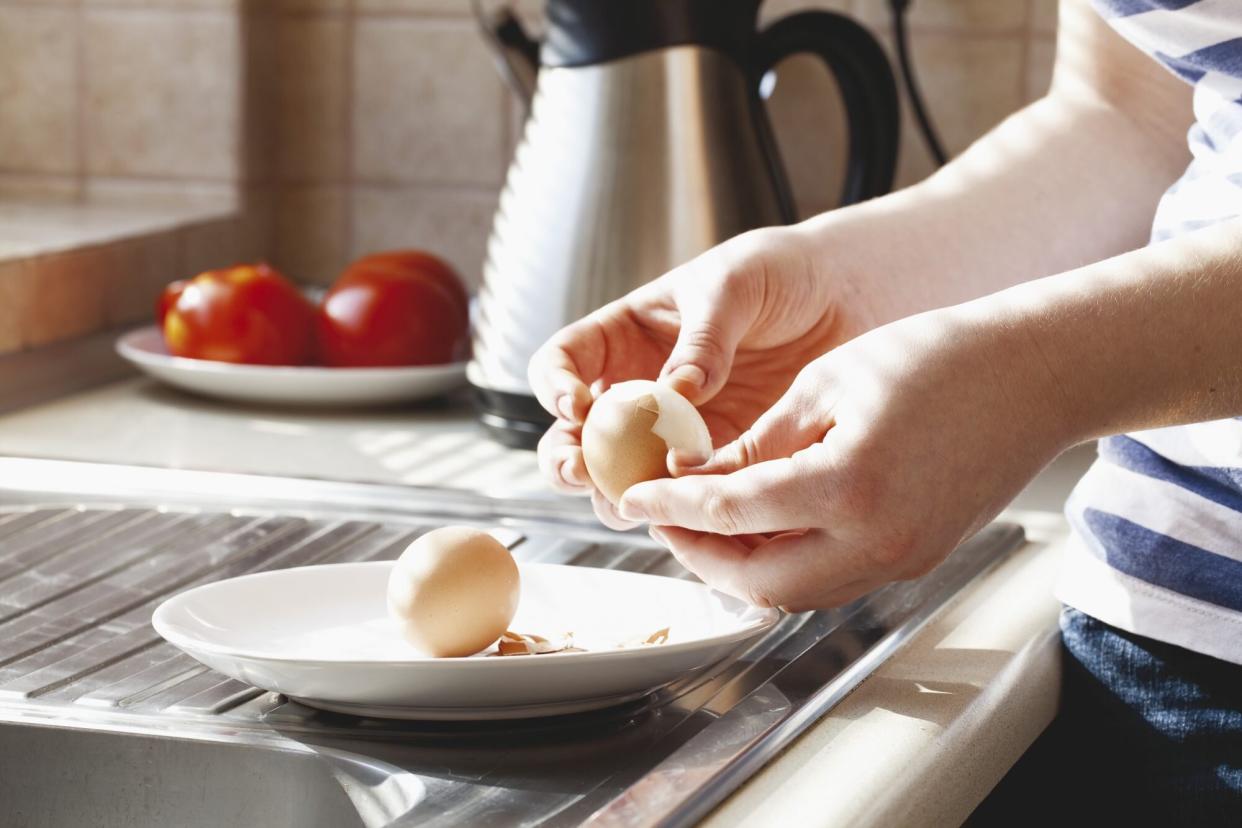The Easiest—and Cleanest—Technique for Peeling Hard-Boiled Eggs

Worytko, Pawel / Getty Images
Learning how to peel hard-boiled eggs is key when you're making recipes like deviled eggs or shoyu ramen—you want your eggs to look perfect, with no dings, dents, or divots. And even when you're peeling eggs for a dish that might disguise the flaws, like gribiche or an egg-salad sandwich, you want to avoid the frustration of gouging your eggs or scattering pieces of shell across the countertop.
There are many factors that go into how an egg looks once cooked and peeled: the age of the egg, the cooking method (stovetop? Instant Pot? baked in a muffin tin?), and the peeling technique. To learn everything we could about eggs, we spoke with Kristen Wharton, vice president of corporate responsibility at Handsome Brook Farms, a network of farms producing organic, pasture-raised eggs.
Related: How to Make Perfect Hard-Boiled Eggs
What is the key to cooking perfectly hard-boiled eggs?
Despite the term "hard-boiled," our founder advises that eggs should never actually be boiled for any length of time; they will turn rubbery and dry. She recommends a foolproof—and largely hands-off—method for stovetop cooking that involves a post-cooking ice bath. The ice bath not only ensures the eggs are cool enough to handle, but it also helps prevent the green ring that can sometimes form around the yolk of hard-boiled eggs. That discoloration is the result of overcooking the egg: Heat speeds up a chemical reaction between the iron and sulfur around the yolk that creates green iron sulfide.
If you cook your eggs gently and use the ice bath to halt the cooking quickly, you'll avoid the tint. But if you miss the mark and overcook your eggs, don't toss them: Wharton assures that— even if it's not desired—the green ring is "100 percent safe."
How do you peel a hard-boiled egg?
Place the hard-boiled egg on your work surface and roll it under your palm to crack the shell. Use gentle pressure to avoid marring the egg white. Hold the egg under cold running water, and start peeling at the large end to get under the membrane where the air sac grants a little access.
If you are peeling a large number of hard-boiled eggs, a bowl of water is more effective—and eco-friendly—than running water. Fill a medium bowl with cool water, then crack the shell gently on a work surface or on the inside of the bowl under the surface of the water. Peel each egg individually under the water, letting the shells fall into the bowl as you work.
Are some eggs easier to peel than others?
Yes, says Wharton, but it's not large versus small or brown versus white. It all has to do with the age of the egg. "In the process of forming the egg, a natural gap develops between the membrane and the shell," says Wharton. "With age and refrigeration, the egg condenses, and that air bubble starts to expand and create more of a gap."
Because that gap helps you separate the membrane from the shell, eggs that are not freshly laid—but not too old—and that have been stored in the refrigerator can be easier to peel.

